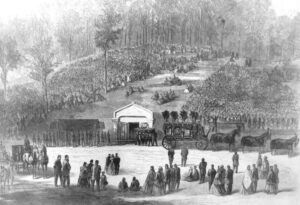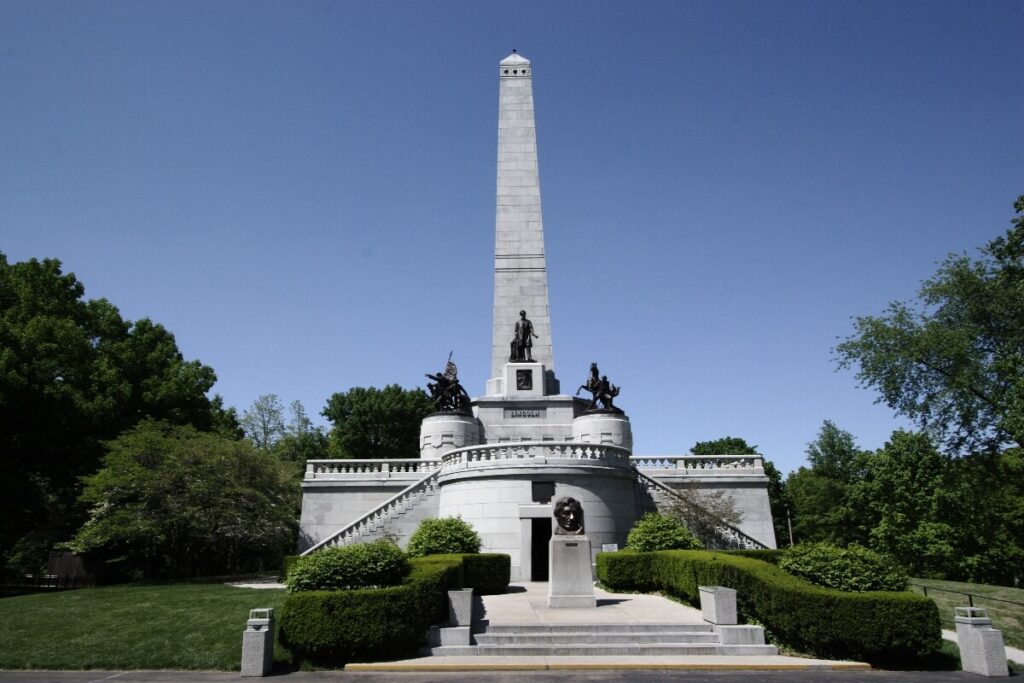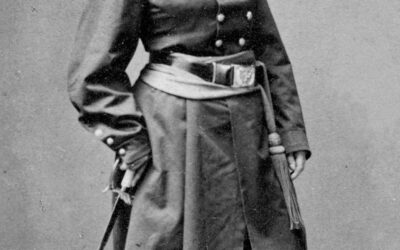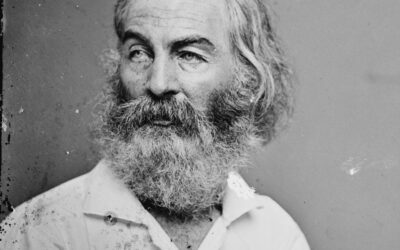
A Nation Mourns
Following his assassination in April 1865, Lincoln’s body lay in state at the US Capitol. draped in the American flag. Crowds thronged the Capitol Rotunda to pay their respects, a poignant scene etched in the nation’s memory. Before embarking on a train voyage across the country, Lincoln’s funeral procession wound its way through the streets of Washington D.C., a somber display of national mourning. As the train traveled through cities, towns, and even remote outposts, crowds gathered at every stop to pay their respects, a testament to the impact Lincoln had made on the nation. Newspapers reported on the outpouring of grief, noting that people from all walks of life, regardless of background or political affiliation, came together to mourn the fallen leader.

Upon arrival in Springfield, Lincoln was interred in a newly constructed tomb designed by sculptor Larkin Goldsmith Mead. The tomb’s exterior is a testament to grandeur, constructed from granite quarried in Maine and dressed in Quincy, Massachusetts. The centerpiece is a soaring 117-foot obelisk, a constant presence on the Springfield skyline. A semicircular entrance leads visitors to a rotunda and ultimately to the burial room. The tomb became the final resting place not only for Abraham Lincoln but also for his wife, Mary Todd Lincoln, and three of their sons, Edward, William, and Thomas.
The Body Snatching Attempt
However, the tomb’s history is marked by an unusual turn of events. In 1876, an audacious attempt to steal Lincoln’s body for ransom prompted the National Lincoln Monument Association to take drastic measures. Fearing for the remains’ safety, they moved Lincoln’s body to a secret location within the tomb for safekeeping. After Mary Todd Lincoln’s passing in 1882, both bodies were eventually placed in a secure vault beneath the tomb floor.
A Final Resting Place
By the late 1800s, the tomb had suffered from years of exposure to the elements and needed significant repairs. During a major restoration project from 1899 to 1901, Lincoln’s casket was moved several times for security reasons. Finally, in 1901, it was placed in a concrete vault ten feet below the burial room, chosen as the final resting place by his son Robert Todd Lincoln. This location has remained undisturbed ever since.
A Grand Design and Enduring Legacy
The Lincoln Tomb is a magnificent structure that stands as a powerful symbol of American history. Built from granite and marble, it features a towering obelisk and a rotunda that provides a reverent space for reflection. Inside, visitors can find a down-scaled bronze replica of the Lincoln statue from the Washington D.C. memorial, a constant reminder of the Great Emancipator. Nine flags are arranged in a semicircle around the cenotaph, seven representing the states that were home to Lincoln and his ancestors, and the remaining two being the American flag and the Presidential flag. The inscription, “Now he belongs to the ages,” believed to be the words of Secretary of War Edwin M. Stanton upon hearing of Lincoln’s death, is etched in the wall above a stained glass window. The Lincoln Tomb was designated a National Historic Landmark in 1960 and listed on the National Register of Historic Places in 1966, a testament to its enduring significance.
Today, the Lincoln Tomb serves as a place of pilgrimage for visitors from around the world. It stands as a permanent memorial to a president who led the nation through its darkest hour and helped shape its future.




0 Comments